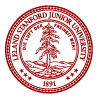Virtual Analog Modeling of Audio Circuitry Using Wave Digital Filters
| Title | Virtual Analog Modeling of Audio Circuitry Using Wave Digital Filters |
| Publication Type | Thesis |
| Year of Publication | 2016 |
| Authors | Werner, K. J. |
| Advisor | Smith, J., J. S. Abel, and J. Berger |
| Academic Department | CCRMA / Music |
| Degree | Ph.D. in Computer-Based Music Theory and Acoustics |
| Number of Pages | 261 |
| Date Published | 12/2016 |
| University | Stanford University |
| City | Stanford |
| Thesis Type | Dissertation |
| Abstract | The Wave Digital Filter (WDF) approach to discretizing electronic circuits has generated substantial interest in the Virtual Analog research community, which is attracted to the potential for systematic and modular simulation of vintage electronic musical instruments (e.g., synthesizers, drum machines) and audio effects (e.g., guitar amplifiers, distortion pedals). Unfortunately, traditional WDF techniques falter at the complexity of typical audio circuits, which contain complicated (non-series/parallel) topologies and multiple nonlinear devices (e.g., diodes, transistors, triodes). In this dissertation, I review classical WDF techniques and propose novel ways of systematically modeling circuits with complicated topologies and multiple nonlinearities. Throughout, the classic Bass Drum circuit from the Roland TR-808 serves as a motivating example and each of the four chapters contains a case study simulating a different one of its subcircuits. The first two chapters consider linear reference circuits. After deriving the standard WDF building blocks and demonstrating their use in a simulation of the TR-808 Bass Drum’s output filter, I explain their substantial limitations in the context of modeling analog audio circuitry. To overcome these limitations, I introduce a novel Modified-Nodal-Analysis-based approach to creating WDFs from circuits with complicated (non-series/parallel) topologies and show it in action on several versions of the Bass Drum’s central circuit (the Bridged-T Resonator). The next two chapters consider nonlinear reference circuits. I review the standard WDF technique for handling reference circuits with a single one-port nonlinear device, exemplified by a model of the TR-808 Bass Drum’s Pulse Shaper subcircuit. In order to overcome the limitation to a single nonlinearity, I propose a novel approach that accommodates multiple nonlinearities and apply it towards a simulation of the full nonlinear version of the Bass Drum’s Bridged-T Resonator. Together, these four case studies form a complete model of the TR-808 Bass Drum that almost exactly matches the behavior of the real circuit, demonstrating the utility of the classical WDF techniques combined with my proposed methods. Beyond this case study, the proposed methods enable the simulation of a huge class of audio circuitry that was previously beyond the scope of WDF modeling. |
| Custom 1 | |
| Custom 2 | |
| Custom 3 | |
| Custom 4 | |
| Custom 5 | |
| Custom 6 | |
| Custom 7 | |
| Full Text |

